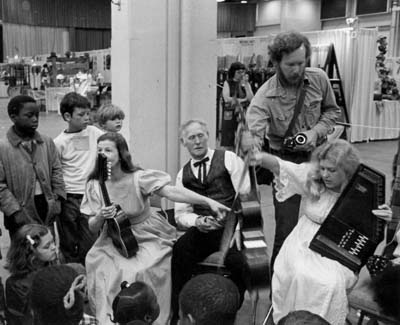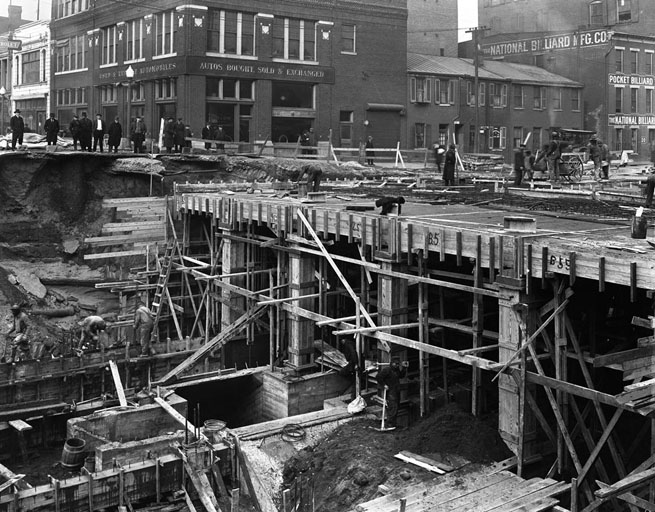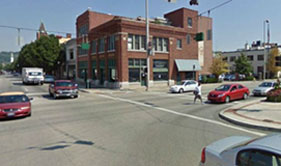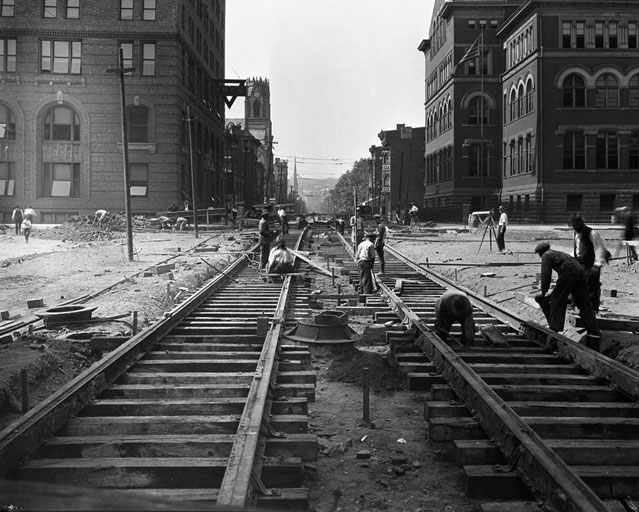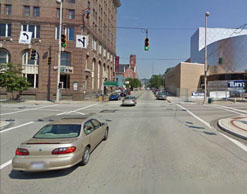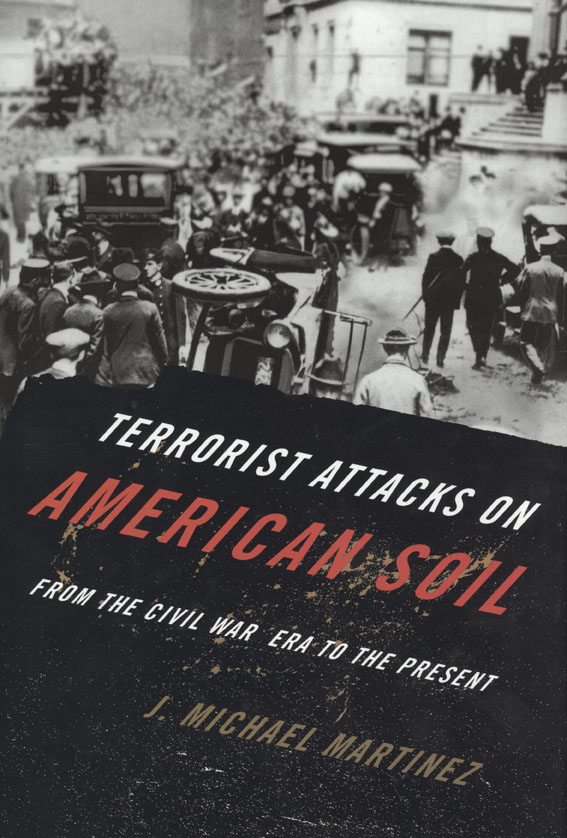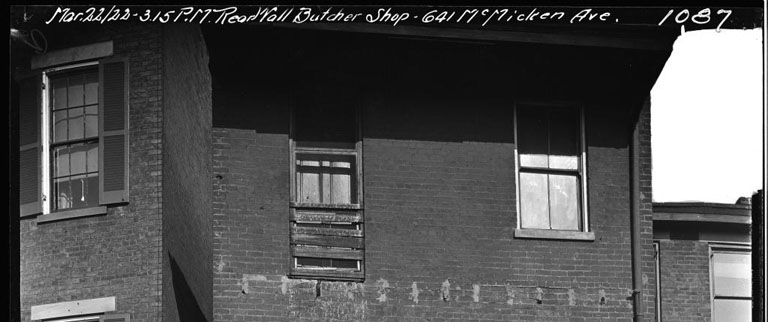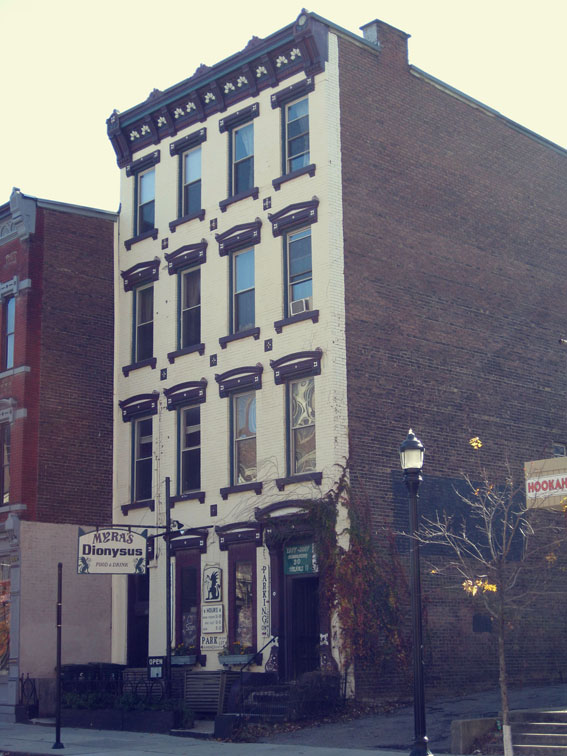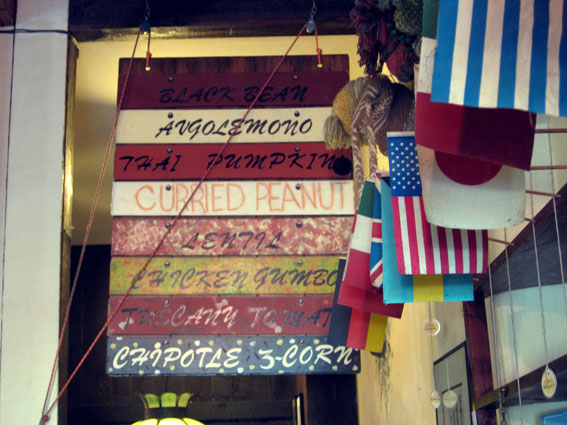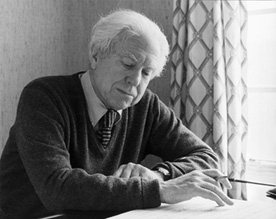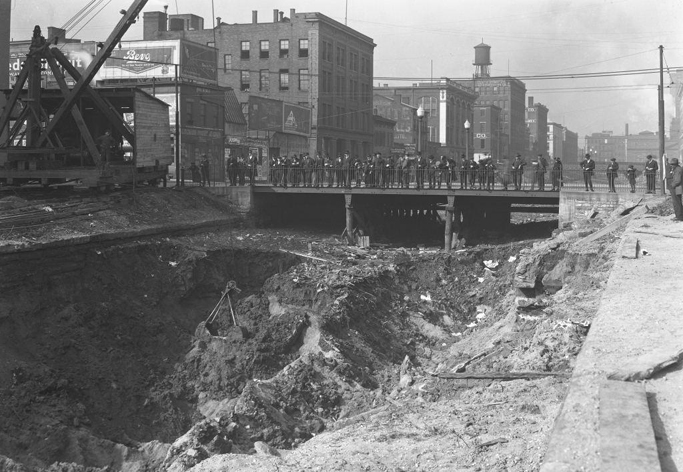By Angela Vanderbilt
Sometimes, in order to build up you must tear down. Sometimes, progress comes with a price. In the case of the Cincinnati subway construction project, that price was the removal of several homes and businesses located along the proposed subway route. The razing of these buildings was due in part to their location, some lay in the direct path of the subway route, but also due to structural damage caused by the construction process.
All buildings were photographed as part of the subway project, including those which sustained damage due to construction of the subway. In some locations, vibration from blasting and digging resulted in cracked walls and ceilings. Below are images from 1921, the beginning of construction, that show cracks in foundations of structures located along the old canal bed, the new Central Parkway. Such photographs would be used to support property owner damage claims made to the city. It is reported that the city paid out over a quarter-million dollars in property damage reparations. Continue reading

